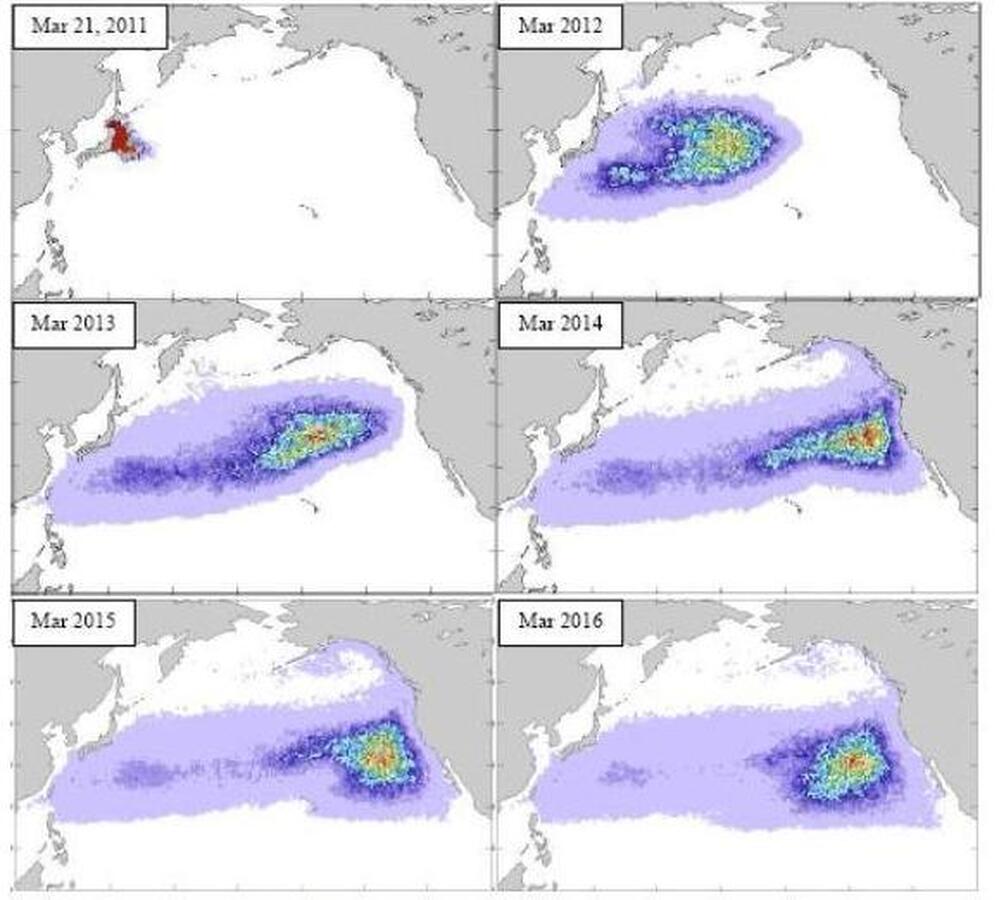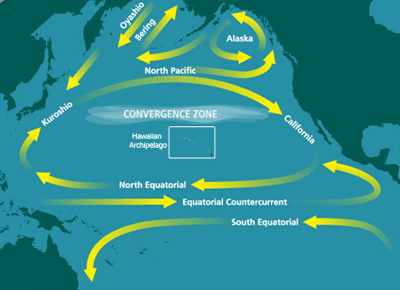Tuesday, April 19, 2011
FDA Refuses to Test Fish for Radioactivity ... Government Pretends Radioactive Fish Is Safe
North Pacific fish are so unlikely to be contaminated by radioactive material from the crippled nuclear plant in Japan that there's no reason to test them, state and federal officials said this week.
***
DeLancey, the FDA spokeswoman, said "We have not been doing any testing. We've been working with NOAA to keep an eye on U.S. waters, to see if there is any cause for alarm, and we do have the capability to begin testing if that does occur."
Asked to explain what kind of monitoring was taking place in the ocean, DeLancey said, "You would have to talk directly to NOAA ... I don't really want to speak for another agency."
But NOAA fisheries spokeswoman Kate Naughton declined to answer questions and referred a reporter back to DeLancey and the EPA.
DeLancey said that so far, there's no reason for concern about Fukushima. The radioactive materials in the water near Fukushima quickly become diluted in the massive volume of the Pacific, she said. Additionally, radioactive fallout that lands on the surface tends to stay there, giving the most unstable ones isotopes like iodine time to decay before reaching fish, she said.
Of course, radioactive isotopes like cesium 137 are very long-lived, and so won't necessarily decay before they reach fish.
And - in typical Orwellian agency-speak - the FDA is trying to reassure people that eating contaminated fish poses no health risk. As the Wall Street Journal notes:
U.S. public-health officials sought Tuesday to reassure consumers about the safety of food in the U.S., including seafood, amid news that fish contaminated with unusually high levels of radioactive materials had been caught in waters 50 miles from the stricken Fukushima nuclear plant in Japan.
No contaminated fish have turned up in the U.S., or in U.S. waters, according to experts from the Food and Drug Administration [which isn't testing], Environmental Protection Agency and Centers for Disease Control and Prevention. They expressed confidence that even a single fish sufficiently contaminated to pose a risk to human health would be detected by the U.S. monitoring system. [But would the government announce such detection?]
They also dismissed concerns that eating fish contaminated at the levels seen so far in Japan would pose such a risk. [Alexander Higgins points out that Japanese fish exceed federal radiation limits by 2400%]
Thomas Frieden, head of the CDC in Atlanta, said he expected continued detection of low levels of radioactive elements in the water, air and food in the U.S. in coming days, but that readings at those levels "do not indicate any level of public health concern."
Is this yet another example of the government responding to the nuclear accident by trying to raise acceptable radiation levels and pretending that radiation is good for us?
Indeed, the ocean currents head from Japan to the West Coast of the U.S.
As AP notes:
The floating debris will likely be carried by currents off of Japan toward Washington, Oregon and California before turning toward Hawaii and back again toward Asia, circulating in what is known as the North Pacific gyre, said Curt Ebbesmeyer, a Seattle oceanographer who has spent decades tracking flotsam.
***
"All this debris will find a way to reach the West coast or stop in the Great Pacific Garbage Patch," a swirling mass of concentrated marine litter in the Pacific Ocean, said Luca Centurioni, a researcher at Scripps Institution of Oceanography, UC San Diego.
Here is what the North Pacific Gyre looks like:
NPR reports:
CNN said that "the Hawaiian islands may get a new and unwelcome addition in coming months — a giant new island of debris floating in from Japan." It relied in part on work done by the University of Hawaii's International Pacific Research Center, which predicts that:
"In three years, the [debris] plume will reach the U.S. West Coast, dumping debris on Californian beaches and the beaches of British Columbia, Alaska, and Baja California. The debris will then drift into the famous North Pacific Garbage Patch, where it will wander around and break into smaller and smaller pieces. In five years, Hawaii shores can expect to see another barrage of debris that is stronger and longer lastingthan the first one. Much of the debris leaving the North Pacific Garbage Patch ends up on Hawaii's reefs and beaches."
The research center has an animated graphic showing the debris field's likely route posted online here. And it has images of how the debris field will circulate, from this month (in upper left corner) to March 2016 (lower right).
 University of Hawaii's International Pacific Research Center
University of Hawaii's International Pacific Research CenterThe projected path of the debris field, from March of this year (in upper left), through March 2016 (lower right). That's the Pacific Ocean, with Japan to the left and the west coast of the U.S. to the right. Hawaii is the small chain of islands in the center.
Indeed, CNN notes:
The debris mass, which appears as an island from the air, contains cars, trucks, tractors, boats and entire houses floating in the current heading toward the U.S. and Canada, according to ABC News.
The bulk of the debris will likely not be radioactive, as it was presumably washed out to sea during the initial tsunami - before much radioactivity had leaked. But this shows the power of the currents from Japan to the West Coast.
Of course, fish don't necessarily stay still, either. For example, the Telegraph notes that scientists tagged a bluefin tuna and found that it crossed between Japan and the West Coast three times in 600 days:

That might be extreme, but the point is that fish exposed to radiation somewhere out in the ocean might end up in U.S. waters.
Nuclear engineer Arnie Gundersen doesn't think there will be a risk within the next year. But as the plume spreads across the Pacific, and as small fish get eaten by bigger fish (i.e. bioaccumulation), it would be prudent to measure radiation in fish caught off the West Coast of the U.S. (and Hawaii), and Gundersen suggests we contact our representatives and demand measurement:
Gundersen Discusses Current Condition of Reactors, TEPCO Claim of "No Fission" in Fuel Pool, and Lack of Radiation Monitoring in from Fairewinds Associates on Vimeo.
3 comments:
→ Thank you for contributing to the conversation by commenting. We try to read all of the comments (but don't always have the time).
→ If you write a long comment, please use paragraph breaks. Otherwise, no one will read it. Many people still won't read it, so shorter is usually better (but it's your choice).
→ The following types of comments will be deleted if we happen to see them:
-- Comments that criticize any class of people as a whole, especially when based on an attribute they don't have control over
-- Comments that explicitly call for violence
→ Because we do not read all of the comments, I am not responsible for any unlawful or distasteful comments.











Too bad you guys are too lame and corrupt to tackle satanism.
ReplyDeleteThe government should get less tax money so that the money could be directed toward capable people with NO VESTED INTEREST in nuclear, medical, political or agriculture industries, that could provide the citizens with accurate information. They should be exempt from censorship. The equipment necessary to record and provide this vital information plus travel & gas monies would come with the job. All schools should get at least one student able to carry on with this vital task when he graduates. We all have to become proficient in reading nuclear measurements since we have to concern ourselves with many nuclear power plants; their cooling pools and the processing of nuclear materials. Governments lie, cheat, and obfuscate the facts. They will not help us. They won't help us. They will distract us. I consider this nuclear so-called accident a soft kill situation where in the agenda for reduction of populations has begun.
ReplyDeleteThe radiation is already in the ocean, one way or another (air or sea) - Radioactive seaweed has been found in Washington state and in Canada (I think the Canadian gov't is actually testing):
ReplyDeletehttp://panoramicboxes.blogspot.com/2011/04/ill-wind.html